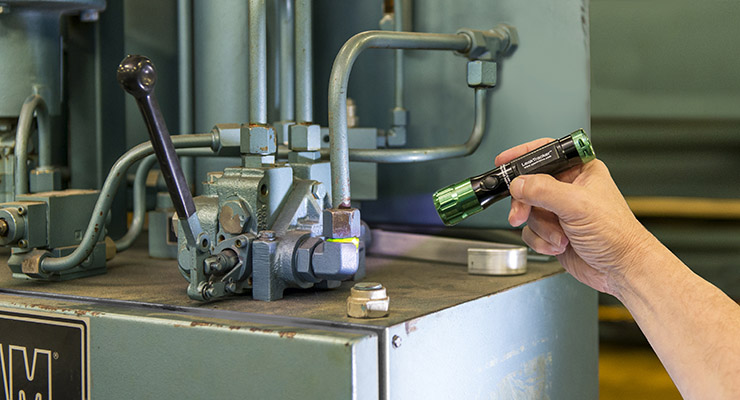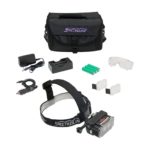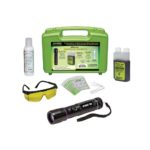By Josh Cosford, Contributing Editor
Pretty much the only time it’s easy to check for hydraulic leaks is when the power unit and machine are spanking new. The pristine, glossy epoxy paint used on power units makes an excellent canvas for the soft amber sheen of hydraulic oil. And to be fair, testing and startup are the most likely occasions when leaks occur, as technicians often forget to tighten one or twelve fittings.
Nevertheless, those startup leaks are easy to find and fix. Conversely, the leaks from mature hydraulic machinery might be camouflaged by dirt, sludge and more oil. Identifying a leak in a foundry, for example, will provide a similar challenge to picking cockroach dookie out of sugar with boxing gloves on. Heck, even if your machines are clean, scouring for the source of a mystery leak may be just as difficult as finding pineapple on a pizza in Venice. Great, now I’m getting hungry.

Indeed, when it comes to hydraulic leaks, I see no better way to describe our plight than by quoting Frank Costanza as he fought a man over a doll for George at Christmas, “As I rained blows upon him, I realized there had to be another way!” Indeed there is Frank, and as much as I love Festivus (and celebrate it every year … no cap), we have better ways to find leaks than in the past.
Since you brought it up, the best method back in the day was to clean the machine – or at least all the connection points – and then stare it down with hopes of seeing a drip or ooze. And cleaning grimy machinery was neither cheap nor easy. We’d have to use degreasers and washable brown shop towels since we’re talking about the days before you could buy the thirty-five-pound bags of reclaimed rags made from old clothes tossed into the donation bin down near the fire station. The real ones know.
If a leak is plaguing you, and your accounting team is complaining about the four-digit entries into the maintenance account of the general ledger because you’re going through so much oil, then I have the solution for you! Fluorescent dye. Thank you, and good night. Don’t forget to tip your waitress.

Seriously though, fluorescent dyes go back over a century but never became common in the fluid power industry until inexpensive and portable black light technology provided the capacity to fluoresce the dye. Previously, black lights were used only in sketchy nightclubs and to light up the leopard print satin sheets on John Travolta’s waterbed. For the Zoomers reading this who know what “no cap” and “real ones” mean, John Travolta is the dude from that 1970’s disco movie where his signature move was pointing everywhere. But I digress.
Through the method of adding fluorescent dye to your hydraulic reservoir, you simply allow the machine to run for a period to blend fully with the dye, and then, using your handheld black light, scan every possible interface to find the location(s) of the leak(s). When you find the glowing oil escaping the circuit, you can tighten the fittings or replace the seals, as required. Easy peasy, fluorescent lemon squeezy.
Don’t worry; manufacturers can make dyes in colors other than fluorescent yellow, so if you run a separate coolant circuit or the fuel system of a mobile machine, you can use different colors to highlight which fluid is making a break for it. These systems are also vastly less expensive than replacing gallons of hydraulic fluid, but when you suspect you have a leak, purchase a fluorescent detection kit immediately to fix both your leak and your operation manager’s ulcer.





Leave a Reply